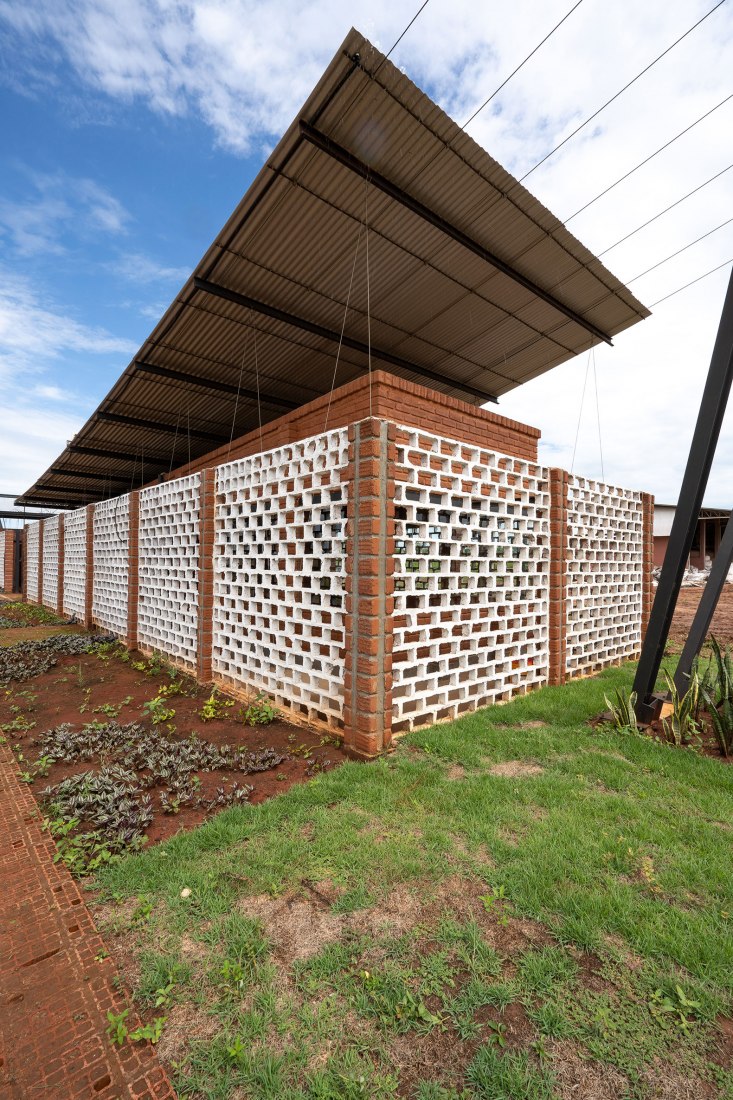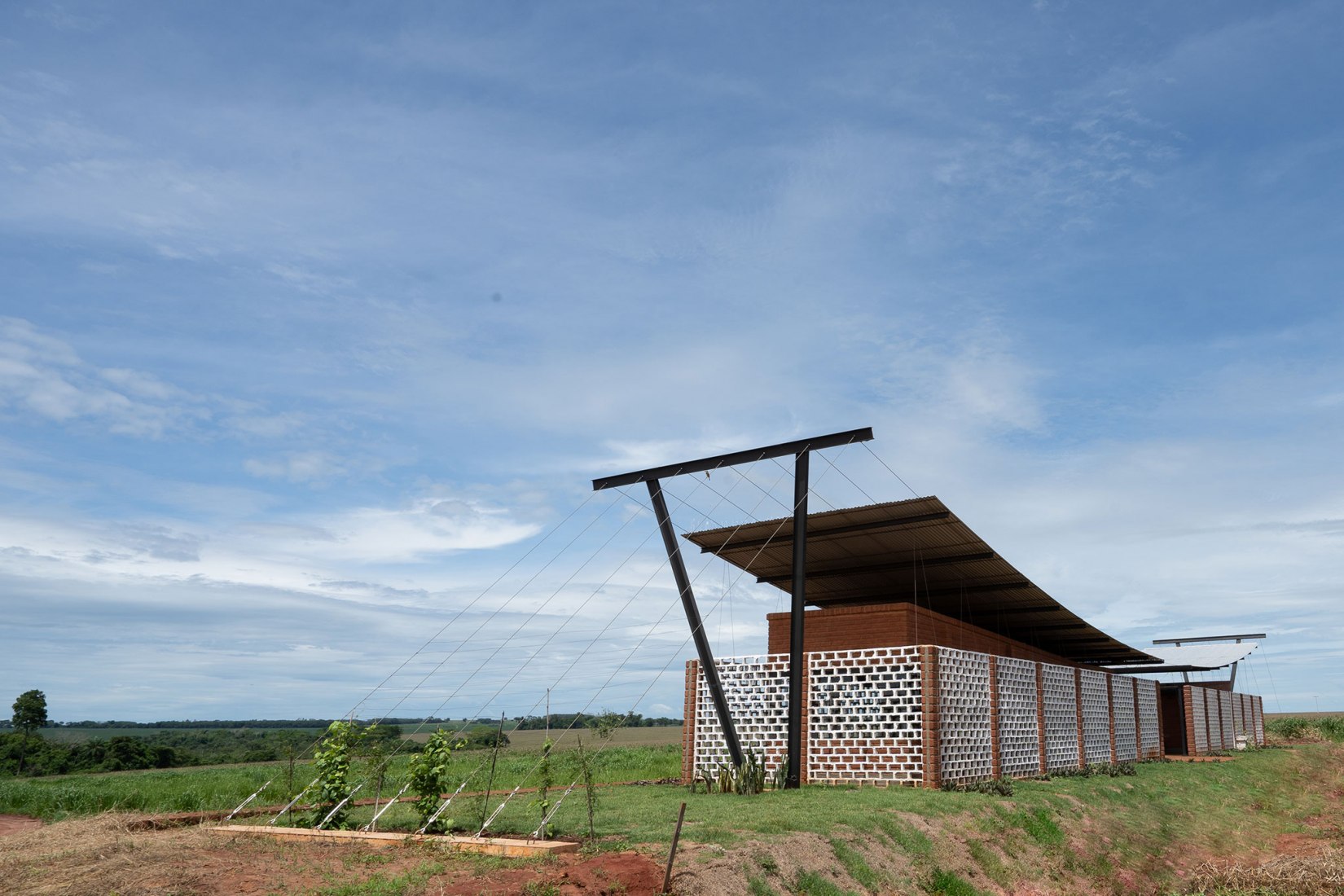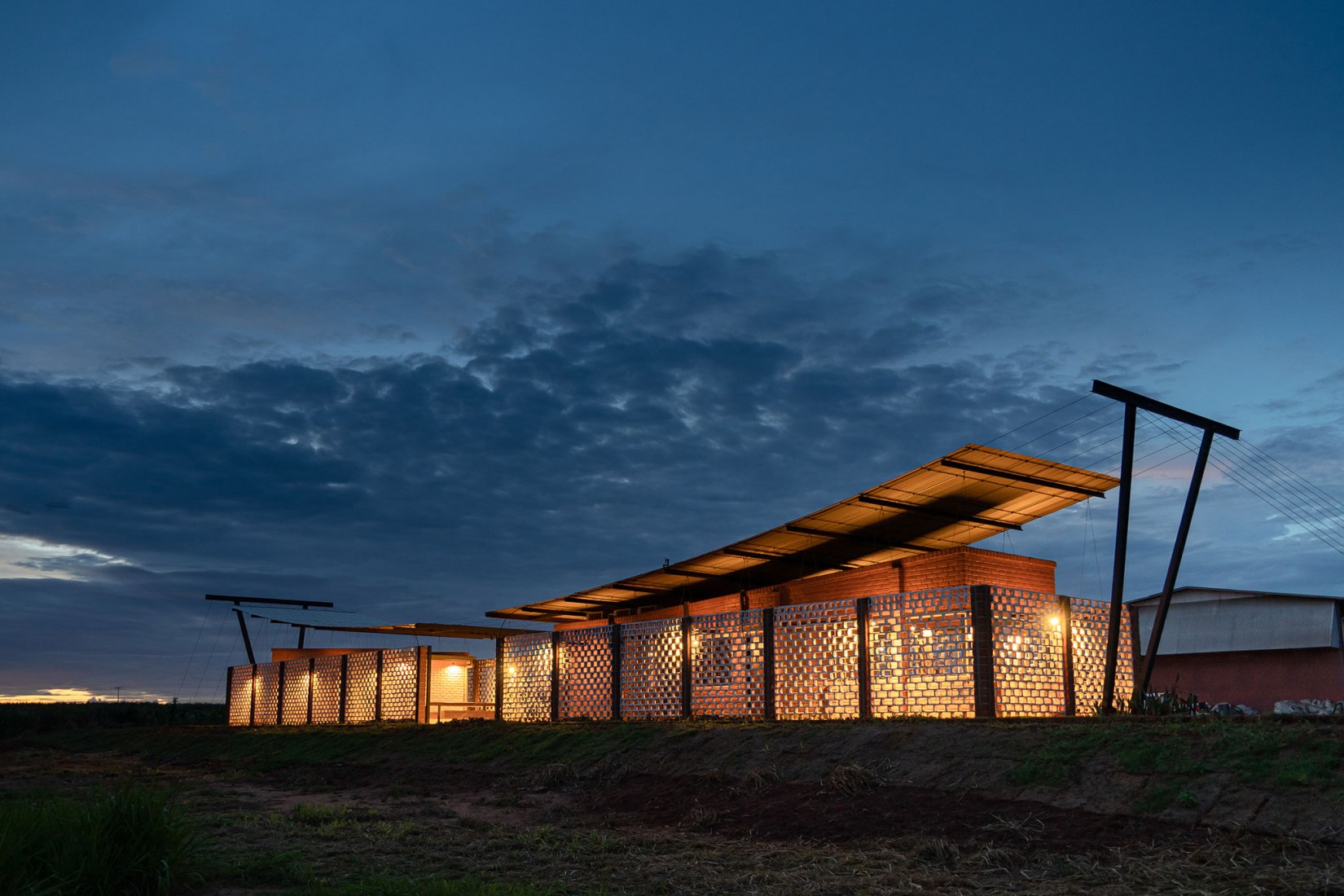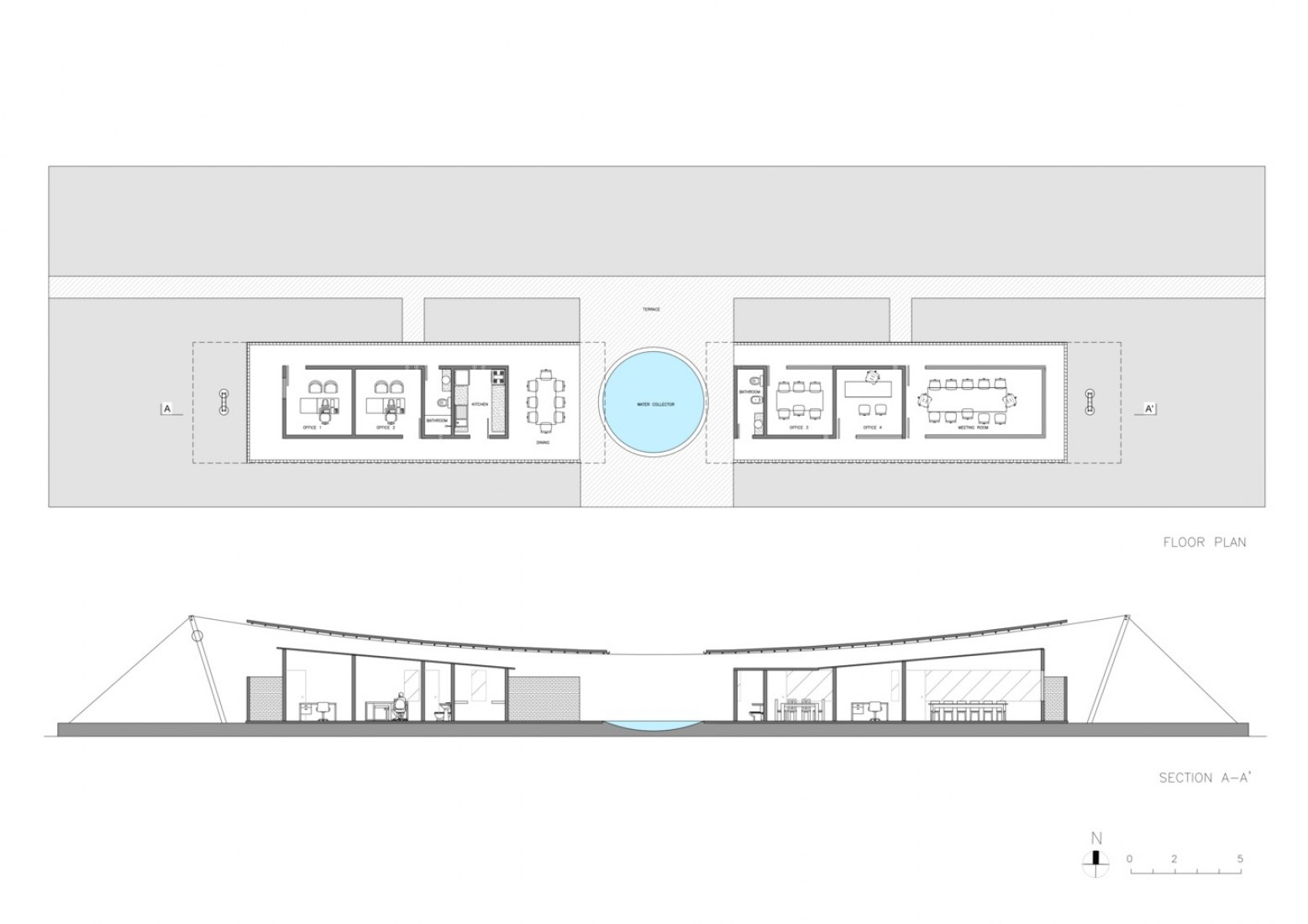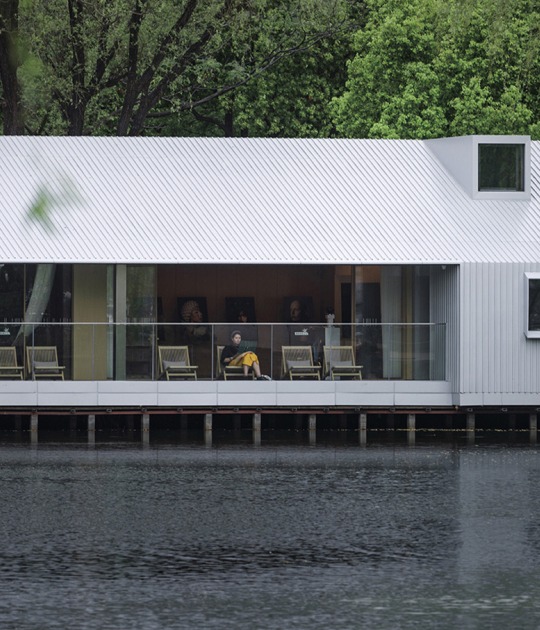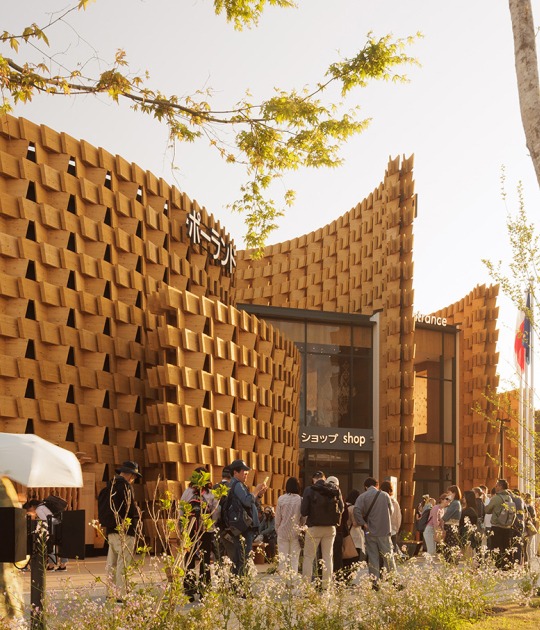The pavilion is fragmented in the middle, defining a central space where rainwater is stored in a circular water mirror; This mechanism also works to cool the interior by pumping the liquid towards the cover. At night the project becomes a luminaire immersed in the landscape, projecting the light on the plain.
Description of project by Mínimo Común Arquitectura
The commission is an office building project located in Curuguaty, 350 km from the capital, Asunción, in an agricultural and livestock area. The dilemma is how to build in the middle of nowhere.
The processes are ordered in five ideas, which reflect the intention of the project.
1. The Soil.- First, the territory had to be controlled in a subtle way. An imaginary line in the landscape allowed to observe what was happening in the surrounding, protecting ourselves from other animals and insects while protecting them as well. A platform was created to allow us to be elevated 1.5 meters from the ground.
2. The Cover.- Once control over the territory was achieved, a shadow needed to be projected. This is the first necessary condition in a climate where 45 degrees Celsius is an everyday situation.
A shadow that shelters the construction itself, directs the winds and collects the waters, giving shelter to the workers in its own construction process, and later safeguard the interaction of the users.
Once the importance of shade was understood, a way to achieve it in a light and economical manner was sought for. Wires were found to be a very efficient element.
The catenary was smiling at us.
The structure would function as a bending moment diagram, the IPN profiles at the ends would work only in compression and the traction ropes provide 45 meters of light with the simplicity of a trace in the air.
3. Materiality.- There weren't many options for materials when building the offices. They were built entirely of earth, fabricating each brick on site, with the use of a press. Only the materials that couldn't be damaged on the way were transported to the site, such as iron, rope and cement. The rest was provided by the land.
4. The Parasol.- Protection from the sun and providing the offices with privacy was the imperative need. The landscape is understood in a different way from the inside in the proximity to the walls. From the horizon, the daily life within these transparent walls is lost in the shadows. This parasol was built of the same material as the walls, of soil, but this time without cement. This allowed us to erase it with water, leaving only the mortar lines, as would happen with the passage of time. Once more, the earth was returned to the ground. To life.
5. Water: Taking advantage of the curve of the catenary, the rainwater is collected, allowing it to be reused. It is pumped to the highest point of the plates and then distributed, thus cooling the entire roof, in a constant circuit of microclimate generating cool and humidity for humans and plants that with the passage of time will end up taking over the whole project.
This brief description, sincere and without much preamble is our declaration of intentions and love for the world, written in stone or bricks or rather, written in earth.











